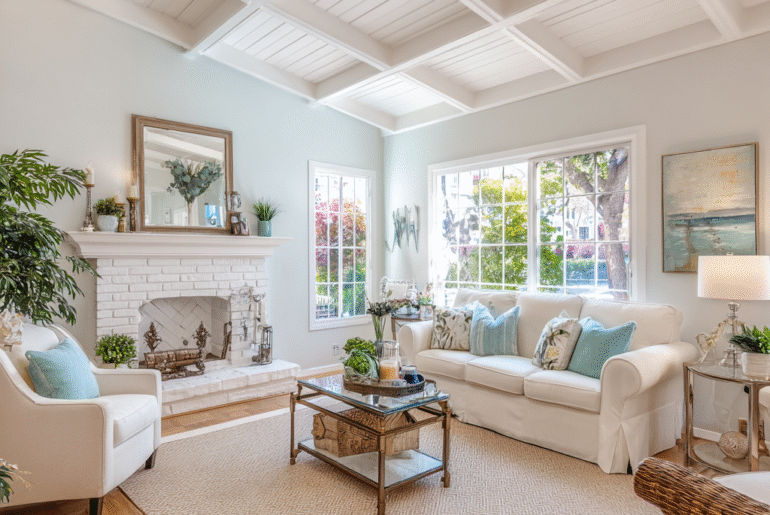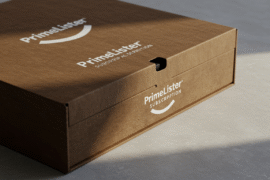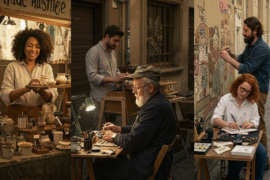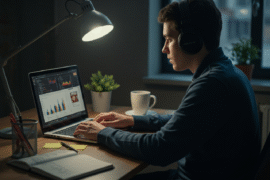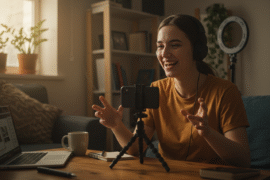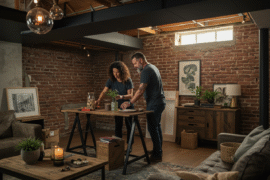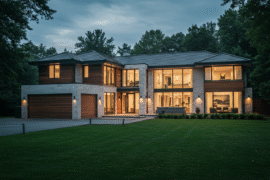This article may contain references to products or services from one or more of our advertisers or partners. We may receive compensation when you click on links to those products or services. Nonetheless, our opinions are our own.
The information presented in this article is accurate to the best of our knowledge at the time of publication. However, information is subject to change, and no guarantees are made about the continued accuracy or completeness of this content after its publication date.
Your listing is the first step in getting people to buy your home, which is a big financial deal. Most people who want to buy a home now start their search online. The pictures in your listing are very important for making that all-important first impression. High-quality, interesting photos can make your home stand out from the rest of the listings and make it one that buyers can’t resist. If you want your home to stand out in a crowded market, you need to spend time and energy making professional, eye-catching photos. Taking great pictures of real estate isn’t just about pointing and shooting; it’s about showing off the best parts of your home and capturing its essence. Every little thing, from the lighting to the angles, is important when it comes to showing off your property in the best way possible. We will show you important tips for taking beautiful real estate photos, from getting ready and choosing the right equipment to editing and working with professionals.
- Setting the Stage
- Choosing the Right Equipment
- Angles & Composition
- Polish Your Masterpiece
- Working with Professionals
- Smart Descriptions
- Common Mistakes to Avoid
- Don’t Forget Curb Appeal
- Conclusion
- Frequently Asked Questions
- Why are high-quality real estate photos important for selling my home?
- How do I prepare my home for a photo shoot?
- Should I hire a professional photographer or take the photos myself?
- What type of lighting works best for real estate photos?
- How many photos should I include in my listing?
- What are some common mistakes to avoid in real estate photography?
- Is it important to include outdoor photos as well?
- How can digital editing enhance my real estate photos?
- Recommended Reads
Setting the Stage
To capture photos that highlight the best aspects of your home, it’s crucial to first prepare your space. Just like you wouldn’t attend a job interview in casual clothes, you shouldn’t present your home in its everyday, lived-in condition.
Steps to Prep Your Home:
- Declutter: A clean space allows potential buyers to imagine their own lives in the home without being distracted by unnecessary items.
- Tip: Clear countertops, tidy up the living spaces, and remove any items that may seem personal or distracting, such as toys or clutter.
- Depersonalize: Remove family photos, certificates, and personal memorabilia. This helps buyers picture themselves living in the space.
- Tip: Replace personal photos with neutral decor or artwork to make the home feel inviting without feeling too staged.
- Stage for Success: Arrange furniture in a way that emphasizes the room’s potential. If necessary, consider renting trendy furniture pieces that might help create a more attractive setting.
- Tip: Aim for simple, clean designs that showcase the space and allow for easy flow between rooms.
Lighting Tips: The right lighting can transform the mood of a room. Natural light, especially during “golden hour” (early morning or late afternoon), can make your home feel more inviting. Avoid harsh overhead lights or dimly lit spaces that may create an unwelcoming vibe.
Choosing the Right Equipment
You don’t need a high-end DSLR to capture great real estate photos. Even your smartphone can be a powerful tool for producing high-quality images with the right techniques.
Equipment Checklist:
| Equipment | Recommended Gear | Description |
|---|---|---|
| Camera | Smartphone or DSLR | Most smartphones have powerful cameras, but DSLRs offer more control. |
| Tripod | Affordable tripods available on Amazon and eBay | Helps stabilize your camera and avoid blurry photos. |
| Editing Software | Lightroom, Snapseed, Adobe Lightroom | Editing can enhance your photos by adjusting brightness, contrast, and saturation. |
Tip: The key is less about the gear and more about how you use it. Focus on your creativity, the composition, and natural lighting, and you’ll achieve impressive results.
Angles & Composition
The way you frame your shots can dramatically influence how a room is perceived.
Here are some essential composition tips to keep in mind:
- Eye-Level Shots: Shooting from eye level creates a more natural, inviting perspective.
- Wide Shots: Show the full scope of each room, but avoid including corners, which can cause distortion.
- Highlight Features: Capture unique details like crown molding, fireplaces, or intricate light fixtures. These features can help convey the personality of the home.
Shot Types to Include:
- Wide-Angle Shots: Capture the entire room to give viewers a sense of space.
- Close-Ups: Focus on architectural details or decorative accents.
- Outdoor Shots: Don’t forget the exterior of the home, including the yard, front door, and any outdoor living spaces.
Polish Your Masterpiece
Editing your photos can significantly improve their appeal, but it’s important not to overdo it.
Here’s what to focus on:
- Adjust Brightness & Contrast: Enhance the warmth and brightness to create an inviting atmosphere.
- Control Saturation: Avoid overly saturated photos that can misrepresent the actual color of your home.
- Crop for Focus: Remove distractions and focus on the most appealing parts of the room.
Editing Software Recommendations:
| Software | Best For | Cost |
|---|---|---|
| Lightroom | Comprehensive editing, RAW image support | Subscription-based |
| Snapseed | Quick editing on smartphones | Free |
| Adobe Photoshop | Advanced editing for professionals | Subscription-based |
Voted "Best Overall Budgeting App" by Forbes and WSJ
Monarch Money helps you budget, track spending, set goals, and plan your financial future—all in one app.
Get 50% OFF your first year with code MONARCHVIP
Working with Professionals
While taking your own photos can be an affordable option, professional photographers bring a level of expertise that can make a huge difference. Here’s why you might consider hiring one:
- Expert Knowledge: Professionals know the best angles, lighting, and staging techniques.
- High-Quality Equipment: They have access to specialized cameras and editing tools.
- Time-Saving: Hiring a professional photographer can save you hours of work while increasing the likelihood of a quicker sale.
Professional photography can feel like an investment at first, but it often pays for itself by attracting more buyers and increasing the sale price of your home.
Smart Descriptions
After you take beautiful pictures, write interesting descriptions that help buyers picture themselves living in your home. Instead of saying, “This living room is big,” say something like, “Picture yourself having fun with friends in this big living room, where the sun shines through the big windows and laughter fills the air.” The goal is to get the buyer to feel something and show them in detail what life in the house could be like.
Common Mistakes to Avoid
Here are some common photography mistakes that could hurt your listing:
- Not Adjusting Brightness: Poorly lit rooms can seem smaller and less inviting.
- Only Using One Angle: Show multiple angles to help buyers understand the space.
- Ignoring Seasonal Changes: If you’re selling in the winter, showing a yard covered in snow might not be the best idea. Instead, you could show the yard when the weather is nicer.
- Overuse of Wide-Angle Lenses: While wide-angle lenses can make spaces seem larger, they can distort the proportions of a room.
Avoid these pitfalls, and you’ll present a polished, professional listing.
Don’t Forget Curb Appeal
The first impression starts outside. Make sure your home’s exterior looks just as appealing as the inside:
- Landscaping: Trim the hedges, mow the lawn, and add seasonal flowers for a pop of color.
- Front Door: A fresh coat of paint on the door can make a welcoming statement.
- Outdoor Lighting: Add outdoor lighting to enhance your home’s charm in evening photos.
Conclusion
The secret to great real estate photography is to show off the special charm and warmth of your home. Every step you take, from getting ready to taking pictures, editing them, and even hiring a professional, gets you closer to showing off your home in the best light. Keep in mind that the goal isn’t just to sell a house; it’s also to tell a story that buyers can relate to. The time you spend making your photos look their best can make a big difference in how quickly and profitably your home sells, whether you do it yourself or hire a professional.
Frequently Asked Questions
Why are high-quality real estate photos important for selling my home?
High-quality photos grab the attention of potential buyers and create a strong first impression. In the digital age, most buyers start their search online, and captivating images help your listing stand out.
How do I prepare my home for a photo shoot?
Before the shoot, declutter and depersonalize your space to make it feel welcoming to buyers. Clean thoroughly, stage furniture to enhance the flow of the home, and make sure rooms are well-lit for the shoot.
Should I hire a professional photographer or take the photos myself?
While taking your own photos can save money, hiring a professional photographer can ensure high-quality images that highlight your home’s best features and make it stand out in a competitive market.
What type of lighting works best for real estate photos?
Natural light is ideal for real estate photography. Schedule the shoot during the day when natural light is abundant. Open blinds, use lamps for added light, and avoid using flash that can create harsh shadows.
How many photos should I include in my listing?
Aim for 20 to 30 high-quality photos, covering each key area of the home, including wide shots and close-ups of unique features.
What are some common mistakes to avoid in real estate photography?
Avoid poor lighting, limiting the number of angles, neglecting exterior shots, or over-editing. Also, remember to stage and declutter properly.
Is it important to include outdoor photos as well?
Yes, outdoor photos are important, as they highlight curb appeal and outdoor spaces. Showcase the yard, garden, and exterior features to create a full picture of your home.
How can digital editing enhance my real estate photos?
Editing can improve brightness, contrast, and saturation to make your photos look more vibrant and appealing. Be sure to maintain accuracy to avoid misleading buyers.

Reviewed and edited by Albert Fang.
See a typo or want to suggest an edit/revision to the content? Use the contact us form to provide feedback.
At FangWallet, we value editorial integrity and open collaboration in curating quality content for readers to enjoy. Much appreciated for the assist.
Did you like our article and find it insightful? We encourage sharing the article link with family and friends to benefit as well - better yet, sharing on social media. Thank you for the support! 🍉
Article Title: Real Estate Photography Tips for Home Sellers
https://fangwallet.com/2025/08/03/real-estate-photography-tips-for-home-sellers/The FangWallet Promise
FangWallet is an editorially independent resource - founded on breaking down challenging financial concepts for anyone to understand since 2014. While we adhere to editorial integrity, note that this post may contain references to products from our partners.
The FangWallet promise is always to have your best interest in mind and be transparent and honest about the financial picture.
Become an Insider

Subscribe to get a free daily budget planner printable to help get your money on track!
Make passive money the right way. No spam.
Editorial Disclaimer: The editorial content on this page is not provided by any of the companies mentioned. The opinions expressed here are the author's alone.
The content of this website is for informational purposes only and does not represent investment advice, or an offer or solicitation to buy or sell any security, investment, or product. Investors are encouraged to do their own due diligence, and, if necessary, consult professional advising before making any investment decisions. Investing involves a high degree of risk, and financial losses may occur including the potential loss of principal.
Source Citation References:
+ Inspo
Jacobs, L. (2010). Professional commercial photography: techniques and images from master digital photographers. Amherst Media.
